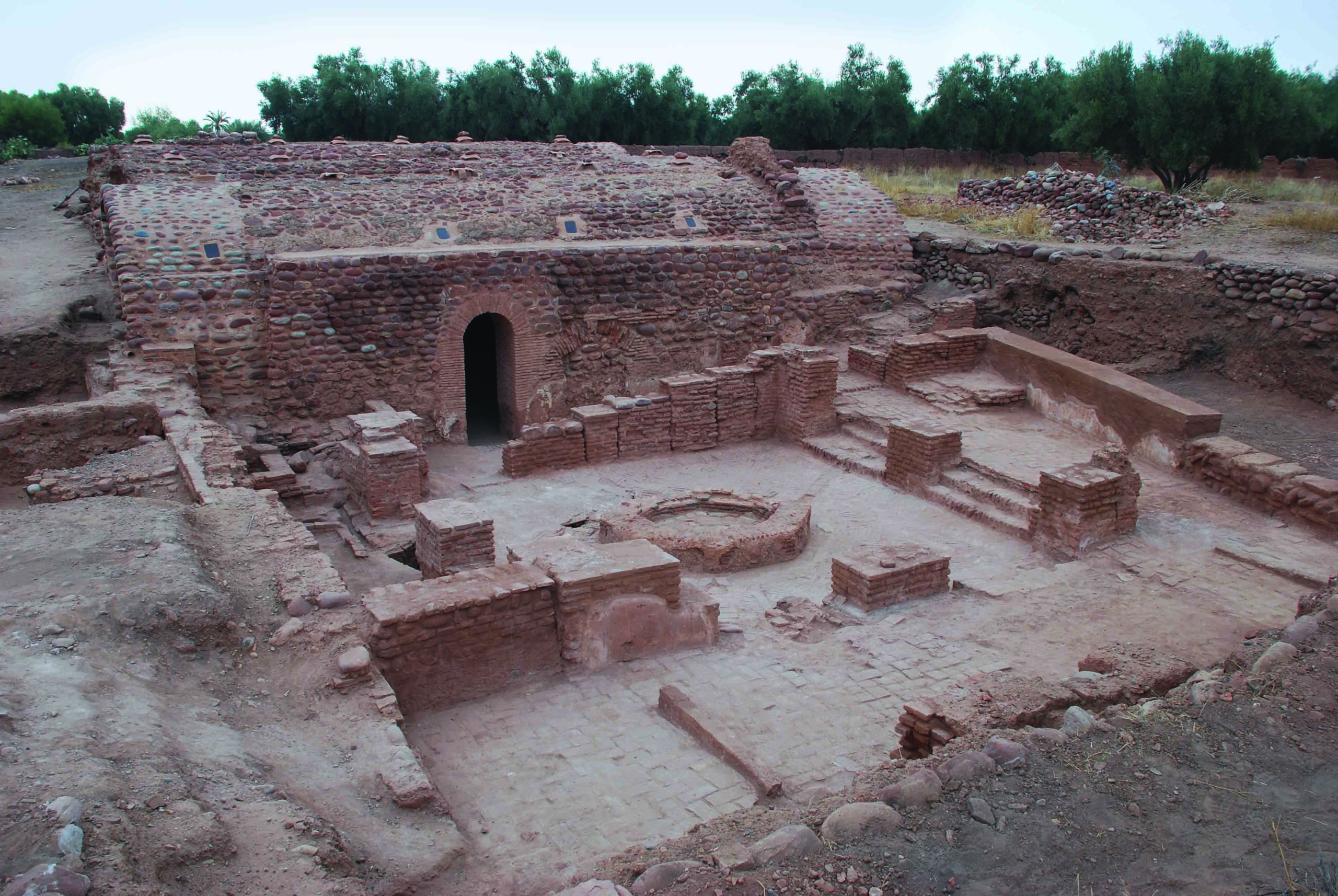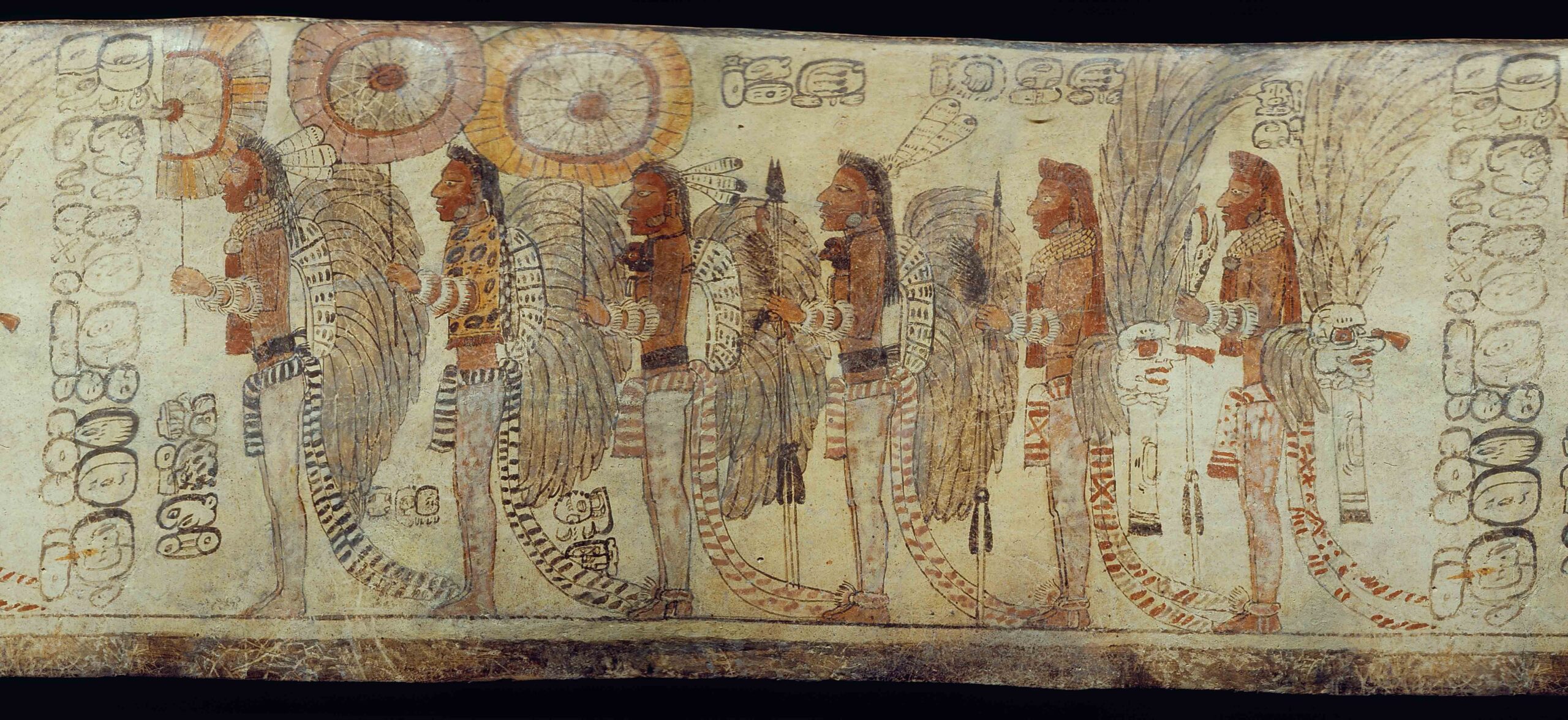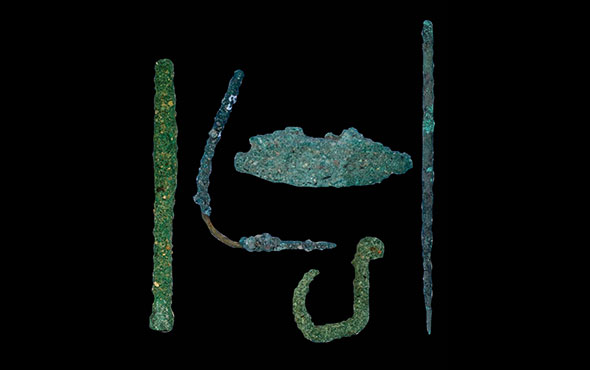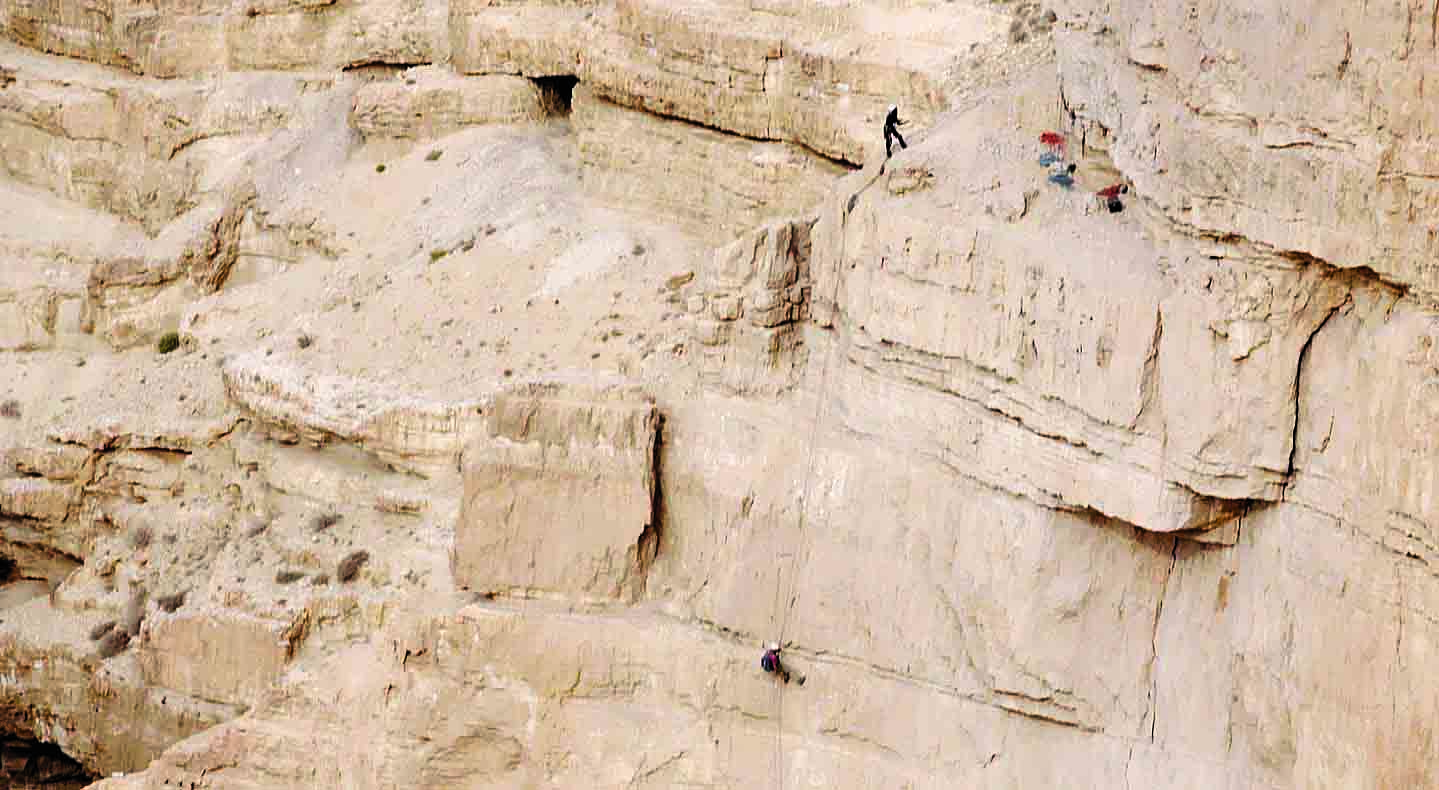RABAT, MOROCCO—Science Magazine reports that perforated shells unearthed in western Morocco’s Bizmoune Cave may be 10,000 to 20,000 years older than early shell beads discovered in Israel’s Skhul Cave and Morocco’s Contrebandiers and El Mnasra caves. Similar shell beads have been recovered at other sites in the region and are thought to have been in widespread use. All but one of the 33 thumbnail-sized, oval mollusk shells in Bizmoune Cave were recovered from an ashy layer that also contained stone blades and scrapers, campfire charcoal, and bone fragments from wildebeest, gazelles, and zebras. Dating of stalagmites and flowstones at the same layer as the beads are thought to have formed at the same time the beads were made. The radioactive decay of uranium and thorium in the flowstone indicates it was formed between 120,000 and 171,000 years ago; the researchers suggest the shell beads are at least 142,000 years old. “North Africa has played a major role in the origins of symbolic behavior,” said Abdeljalil Bouzouggar of Morocco’s National Institute of Archaeology and Heritage and the Max Planck Institute for Evolutionary Anthropology. Researchers think shell beads may have been used as personal adornments, to signal clan identity or partnerships, or as gifts to solidify bonds. To read about excavations at the medieval city of Aghmat, go to "Letter from Morocco: Splendor at the Edge of the Sahara."
Shell Beads in Morocco May Be World’s Oldest
News September 24, 2021
Recommended Articles
Off the Grid May/June 2024
Lixus, Morocco

Top 10 Discoveries of 2021 January/February 2022
Earliest Leatherworkers
Contrebandiers Cave, Morocco

Letter from Morocco May/June 2020
Splendor at the Edge of the Sahara
Excavations of a bustling medieval city tell the tale of a powerful Berber dynasty


-
Features July/August 2021
Autobiography of a Maya Ambassador
A grand monument and a humble burial chronicle the changing fortunes of a career diplomat
 (Justin Kerr, K-5763, Justin Kerr Maya Vase Archive, Dumbarton Oaks, Trustees for Harvard University, Washington, D.C.)
(Justin Kerr, K-5763, Justin Kerr Maya Vase Archive, Dumbarton Oaks, Trustees for Harvard University, Washington, D.C.) -
Letter from Alaska July/August 2021
The Cold Winds of War
A little-known World War II campaign in the Aleutian Islands left behind an undisturbed battlefield strewn with weapons and materiel
 (Brendan Coyle)
(Brendan Coyle) -
Artifacts July/August 2021
Egyptian Copper Tools
 (Courtesy Martin Odler and Jiří Kmošek, Czech Institute of Egyptology, Faculty of Arts, Charles University)
(Courtesy Martin Odler and Jiří Kmošek, Czech Institute of Egyptology, Faculty of Arts, Charles University) -
Digs & Discoveries July/August 2021
A Challenging World
 (Courtesy Yoli Schwartz/Israel Antiquities Authority)
(Courtesy Yoli Schwartz/Israel Antiquities Authority)


